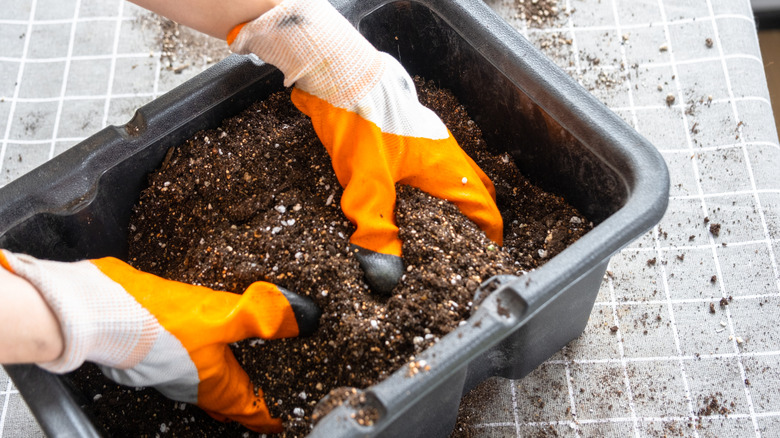Two Qualities That Matter Most When Selecting Potting Soil
When you decide to grow plants in containers, you probably worry about things like choosing a good plant pot and finding the optimum watering schedule. However, one element that often flies under the radar but is actually essential for successful container gardening is the potting soil. After all, the convenience of having potted plants means that they are away from their natural habitat — natural soil in the ground. But how do you decide on the best potting mix?
The two most important functions a good potting soil performs are delivering nutrients and providing a healthy structure for the plant's roots. With these functions in mind, selecting the right soil for your pots becomes a breeze. As long as the soil is performing these jobs well, you can even prepare and reuse old potting soil to support your plants again. In general, any potting soil you choose from the store should be light, fluffy, and contain the right balance of organic ingredients (peat moss, bark, coconut coir) and inorganic ingredients (perlite, vermiculite) to be able to provide adequate nutrients and structure to the plant.
Keep in mind that, while potting soil is a term used to describe the medium in which you grow container plants, the term can be misleading since, a lot of the time, there is no actual "soil" in it. This is especially true if you're growing ornamentals or vegetables. Soilless potting medium also results in fewer diseases for plants and better drainage. Still, the most important qualities to look for remain the same: nutrients and structure.
Potting soil should contain plenty of nutrients
Although plants that grow in containers don't get their nourishment from garden soil, the potting medium is still the only vehicle for them to get nutrients. Potting mixes need to have the right balance of essential plant nutrients, such as nitrogen, calcium, potassium, and phosphorus, to be able to help your plants grow and flower. Furthermore, for different plant types, you should ideally choose the potting mix that suits their particular requirements. For example, outdoor raised beds can benefit from a potting mix that's richer in nutrients, while potting mixes for succulents and cacti are typically more sparse.
Although organic materials like compost provide nutrients, good potting soils should also have added fertilizers, which are often the main ingredients responsible for delivering nutrients to the plant. They can either be slow-release formulations or quick, synthetic ones. Alternatively, some potting mixes contain organic nutrient-rich amendments instead, such as alfalfa meal or bone meal. Having said all that, the nutrients in a container's potting mix gradually leach out with regular watering. Therefore, you should keep adding fertilizer to the mix throughout the growing season for healthy plant growth. Keep in mind that if you're thinking of growing edible plants in pots, you should avoid potting soils that contain chemical fertilizers.
Potting soil should be light, yet stable
The other important function of a good potting soil is providing structure and anchorage to the plant's roots. For the roots of your plant to have the room to grow and take in nutrients, the surrounding soil particles must have enough space between them. These spaces also allow resources like air and water to freely travel. Furthermore, the soil also needs to hold the roots in place and provide stability against the elements. On the other hand, too much compaction in the soil can result in suffocating the roots and conditions like root rot.
This is why an ideal potting soil should be light and fluffy, so that oxygen, moisture, and nutrients are all readily available for the roots. A good potting soil should crumble easily in the hand. You should avoid potting soils that feel clumped or too heavy. Inorganic materials, such as perlite and vermiculite, help in improving the aeration and drainage of a potting soil, so watch out for these ingredients. The presence of coconut coir is also a good sign, since it retains a good deal of moisture without weighing down the potting soil and is a more sustainable option than peat moss.


